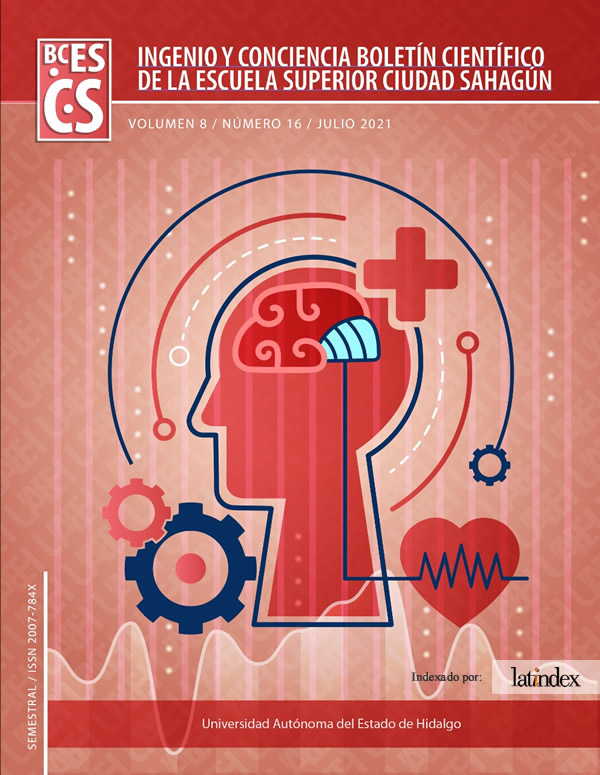The technological evolution of manufacturing systems and statistical science
Abstract
Since the first industrial revolution, manufacturing systems have continuously evolved from the development of concepts to the methods, tools, and technologies available to produce goods or services. One of the main characteristics of the fourth industrial revolution has been the development and application of information and communication technologies permeating all manufacturing systems, which has caused the generation of large volumes of data. These developments are changing the nature of applying Statistical Science. This manuscript aims to provide a general description of the technological evolution of the industrial revolutions and statistics through a qualitative description of a bibliographic and documentary nature to identify how manufacturing systems have evolved and how statistics are becoming involved in the fourth industrial revolution. This analysis shows that the transition from industrial revolutions was due to the massive implementation of technological and scientific innovations that were implemented in the different manufacturing systems. From the context of statistics, the fourth industrial revolution has created new technological and scientific trends to collect, organize, and analyze data. From the perspective of the data itself, it is shown that machine learning, operations research, methods and algorithms, and data mining, and big data techniques are aligned to address new challenges characterized by the complexity, volume, and complexity heterogeneous nature of the data.
Downloads
References
Accel&GROW. (2021). Tecnología 4.0 y la cuarta revolución industrial. Recuperado el 24 de marzo de 2021, de https://www.accelgrow.com/2019/01/25/tecnologia-4-0-y-la-cuarta-rev6olucion-industrial/.
Barreto-Villanueva, A. (2012). El progreso de la estadística y su utilidad en la evaluación del desarrollo. Papeles de Poblacion, 18(73), 1–31.
Berinato, S. (2019). Data science and the art of persuasion, 1-3.
Brichni, M. & Guedria, W. (2018). Data analytics challenges in industry 4.0: A case-based approach. In Lecture Notes in Computer Science (including subseries Lecture Notes in Artificial Intelligence and Lecture Notes in Bioinformatics): Vol. 11230 LNCS. Springer International Publishing.
Burgos-Martínez, R., Argüelles-Pascual, V. & Palacios, R. H. (2021). Etapas del método estadístico. 9(17), 35–36.
Chaves-Palacios, J. (2004). Desarrollo tecnológico en la Primera Revolución Industrial. Norba. Revista de Historia, 17(17), 93–109.
Champkin, J. (2013). Timeline of statistics. Significance, 10(6), 23-26.
Clark, W. W. & Grant Cooke, M. J. (2010). The Third Industrial Revolution. In Sustainable Communities Design Handbook. Elsevier Inc.
Coluccia, D. (2012). The First Industrial Revolution (c1760-c1870) The application of the scientific method to economic, social and political problems. 41–51.
de Oliveira Neto, F. G., Torkar, R., Feldt, R., Gren, L., Furia, C. A., & Huang, Z. (2019). Evolution of statistical analysis in empirical software engineering research: Current state and steps forward. Journal of Systems and Software, 156, 246–267.
Economipedia. (2016). Las innovaciones de la tercera revolución Industrial. Recuperado el 25 de marzo de 2021, de https://economipedia. com/definiciones/tercera-revolucion-industrial.html.
Flores, G. (2014). Archivo de estadística. Recuperado el 25 de marzo de 2021, de https://mrgonzaloflores.wordpress.com/2014/11/03/archivo-de-estadistica/.
Gupta, V. K., Mandal, B. N. & Parsad R. (2021). History of Statistics on Timeline. Recuperado el 27 de marzo de 2021, de https://ssca.org.in/media/History_of_Statistics_on_Timeline.pdf.
Lin, Y., Luo, J., Ieromonachou, P. & Huang, L. (2018). Manufacturing System Evolution. 2018 15th International Conference on Service Systems and Service Management, ICSSSM 2018, 1–6.
McAfee, A., & Brynjolfsson, E. (2012). Big Data The management revolution. Harvard Business Review, 1-8.
Mundo contemporáneo. (2021). La revolución Industrial. Recuperado el 25 de marzo de 2021, de http://www.iesseneca.net/iesseneca/IMG/pdf/tema_2._la_revolucion_industrial.pdf
Patricia & Catherine. (2014). Revolución Industrial: La segunda revolución Industrial. Recuperado el 25 de marzo el 2021, de http://industrial-revol.blogspot.com/2007/12/la-segunda-revolucin-industrial.html.
Penta Analytics. (2018). 5 claves para el uso de analytics & big data. Recuperado el 25 de marzo de 2021, de https://www.analytics.cl/analytics/5-claves-uso-analytics-big-data/.
Sagaró del Campo, N. M., & Zamora Matamoros, L. (2019). Evolución histórica de las técnicas estadísticas y las metodologías para el estudio de la causalidad en ciencias médicas. Medisan, 23(3), 534–556.
Tiscareno, K. (2017). México puede ser líder en la cuarta revolución industrial. Recuperado el 25 de marzo de 2021, de https://expansion.mx/opinion/2020/01/27/mexico-puede-ser-lider-en-la-cuarta-revolucion-industrial
Thoben, K. D., Wiesner, S. A., & Wuest, T. (2017). “Industrie 4.0” and smart manufacturing-a review of research issues and application examples. International Journal of Automation Technology, 11(1), 4–16.
UPPERMAN, P.M. (1985). Industrial Statistics. Statistica Neerlandica, 39(2), 203-217.
Zhang, C., Yang, J. (2020). A History of Mechanical Engineering. In A History of Mechanical Engineering.












